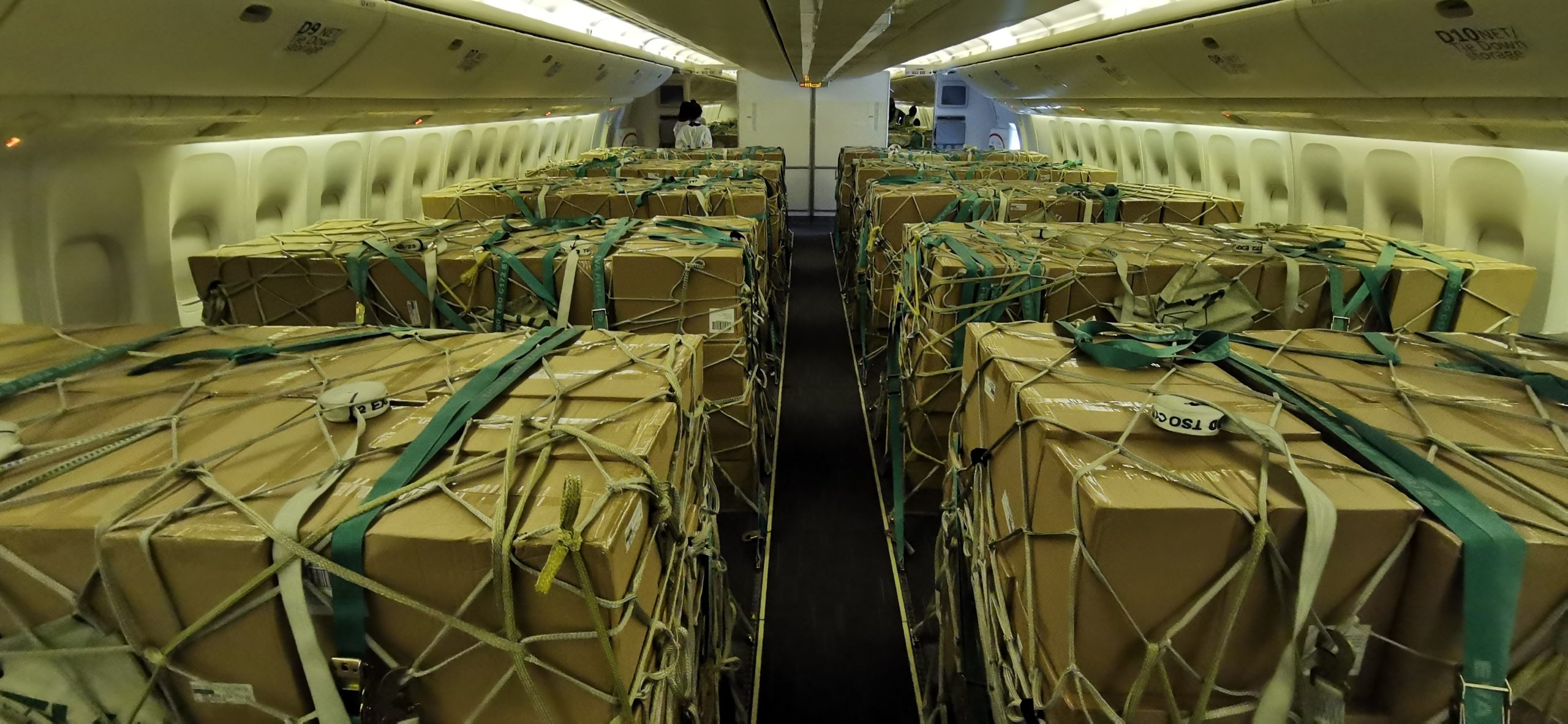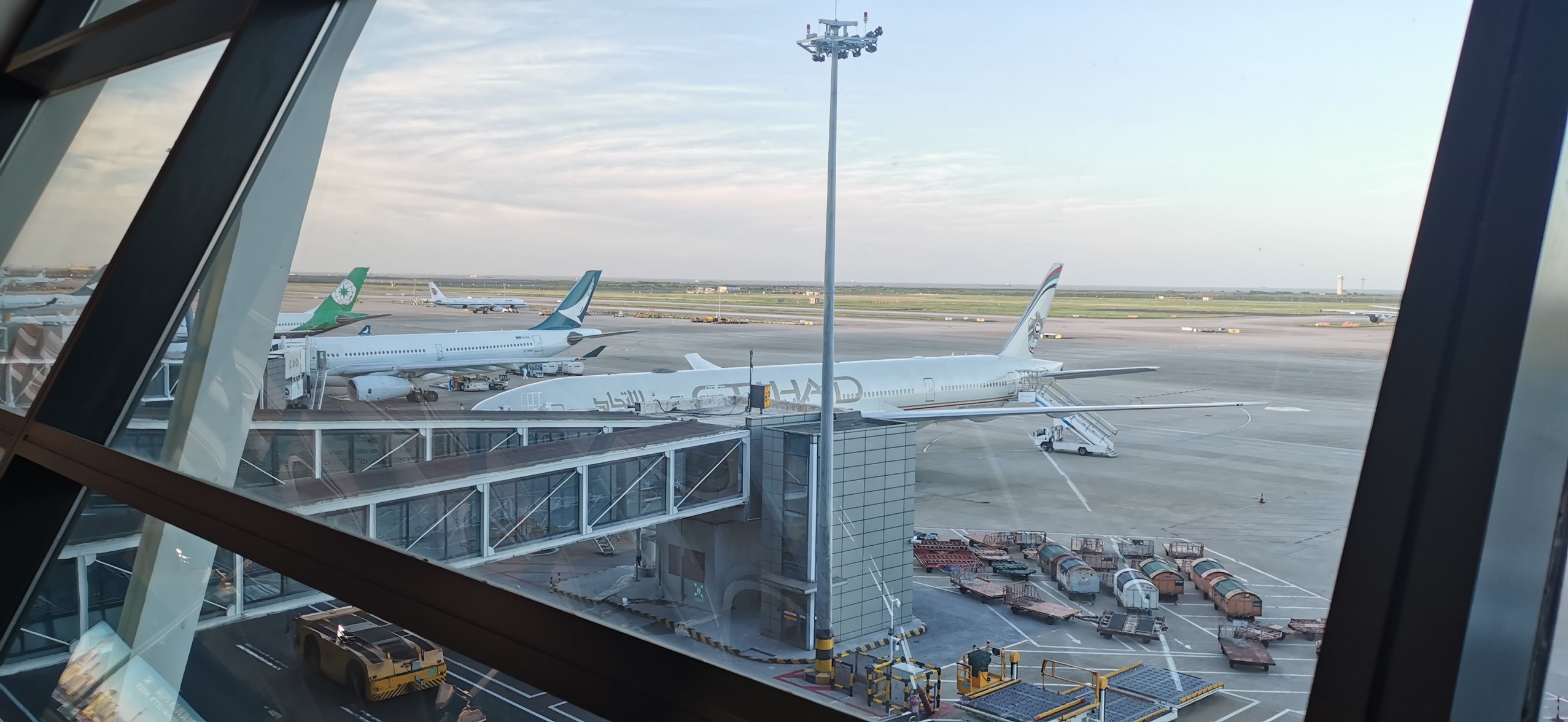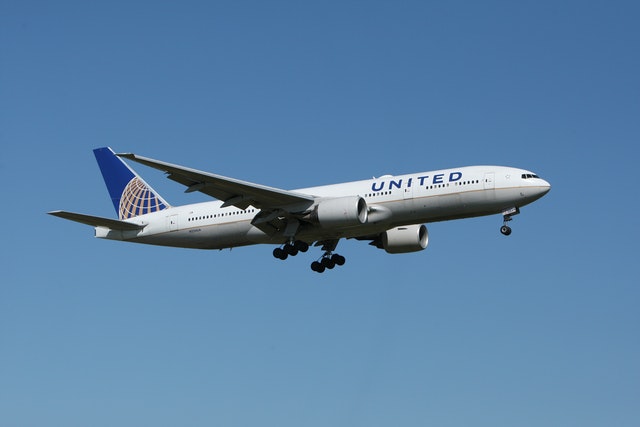When the COVID-19 Pandemic halted numerous air routes worldwide during 2020, a quick solution was needed to transport the cargo that had usually flown in the belly of passenger flights, as well as support the increased levels of medical supplies and e-commerce shipments being transported.
As a stopgap measure, some airlines flew their passenger aircraft as belly cargo-only freighter flights, while others sought approval to transport cargo in the passenger cabin as well. Here we’ll take a look at what goes into passenger cabin cargo loading operations including the logistics of loading and unloading the aircraft, securing cargo in the cabin, and what types of goods are transported in this manner.

Operators & Routes
Over the past two years, major passenger airlines, such as Garuda Indonesia and Air Canada, and ACMI and charter operators, such as Air Atlanta Icelandic and HiFly, have all conducted regular cargo in cabin flights. New specialist cargo operators, such as European Cargo, also were born out of the high demand for air cargo capacity during the pandemic and began operating secondhand passenger aircraft, often Airbus A340s, on freight-only flights. A large number of such flights operated between East Asia and Europe or North America. Usually, the passenger cabins were only used for cargo on the Asia-originating sectors, while the belly space was used for cargo in both directions. However, some airlines did manage to fill the passenger cabins both ways.
Aircraft
Here is a non-exhaustive list of aircraft types that have been used for cargo in-cabin flights and the airlines that have operated them.
- Airbus A320 (AirAsia)
- Airbus A330-300 (AirAsia X, Thai AirAsia X, Garuda Indonesia, Cebu Pacific, HiFly)
- Airbus A330-900neo (Garuda Indonesia)
- Airbus A340-300 (HiFly, Air X Charter)
- Airbus A340-600 (European Cargo, Air X Charter, HiFly)
- Airbus A350-900 (Philippine Airlines)
- Boeing 747-400 & -400 Combi (Air Atlanta Icelandic)
- Boeing 767-300 (Azur Air)
- Boeing 777-300 (Air Canada, EVA Air, Nordwind, Rossiya)
- Boeing 787-8 (El Al)
Requirements & Limitations
In order to gain approval to transport cargo in the passenger cabin, the operator needs to formalize some procedures and limitations, such as maximum height and weight of cargo loaded in the cabin, designated and numbered positions in the cabin where cargo should be (and should not be) placed, types of cargo allowed in the cabin, methods of securing the cargo, and a loadsheet must be developed for the passenger cabin so the load control staff at the station or loadmaster onboard can indicate which cargo should be placed where.

The limitations and cargo position numbers need to be placarded inside the aircraft before it can be used for cargo flights. Types of cargo forbidden from being carried in the passenger cabin include dangerous goods and live animals. Where operators left the passenger seats installed, usually the height limitations are that no cargo can be loaded higher than the seat back or top of the window frame. There is usually a small contingent of flight attendants, or alternatively a loadmaster, onboard to to keep an eye out for fires and do routine checks of the cargo and tie-downs during flight as well as operate the aircraft doors on the ground.
Staffing & Equipment
Most operators contract with a ground handling agent to provide staff to load the cargo onto the aircraft and secure it onboard. A few others only contract with the ground handler to transport the cargo to the aircraft door and have a team of loading staff that travels with the aircraft to position and secure the cargo in the cabin. As all cargo on the upper deck needs to be bulk loaded, it is a time consuming and labor-intensive task.
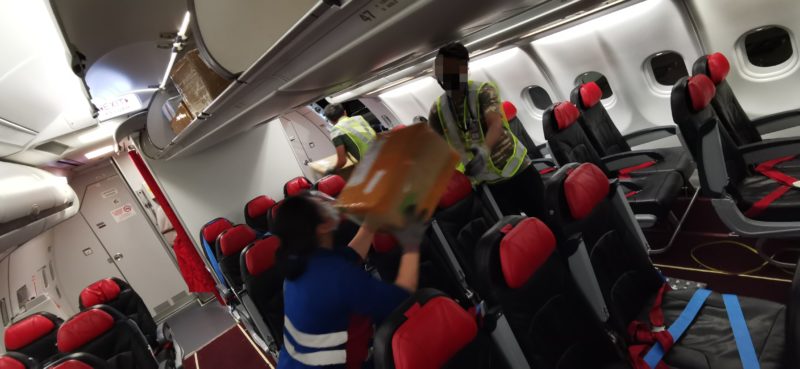
Most airlines will also contract with a catering company to provide a lift truck to ease the process of bringing cargo from the ramp to the cabin door. For airlines that do not contract a catering company, the ground handling staff will use a stair truck and form a human chain to move boxes and cargo bundles from the ramp, up the stairs, and into the cabin one by one. For Boeing 747 aircraft, cargo positions were even placed on the upper deck where seats had been removed. As such, boxes for these positions need to also be carried up the aircraft’s internal staircase.

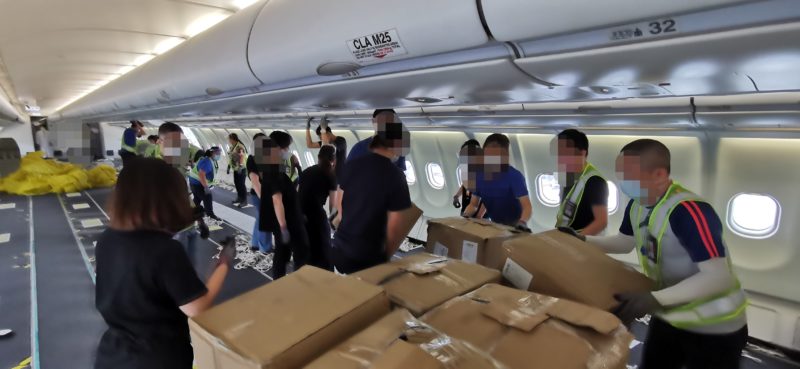
Loading Operations
Prior to beginning loading operations, ground handling staff will need to arrange the tie-downs and netting inside the aircraft. This includes untangling nets, disconnecting fasteners, and placing all the tie-downs out of the way for loading to proceed smoothly.
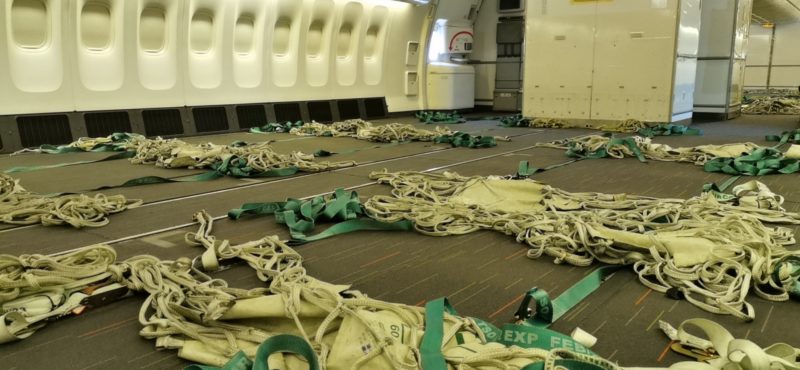
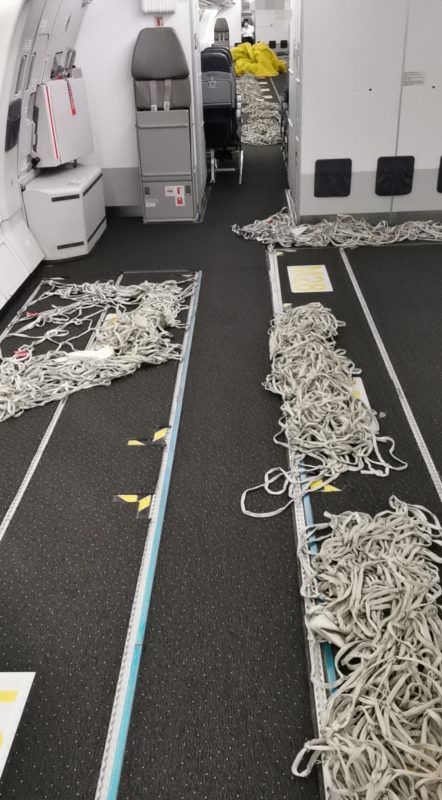

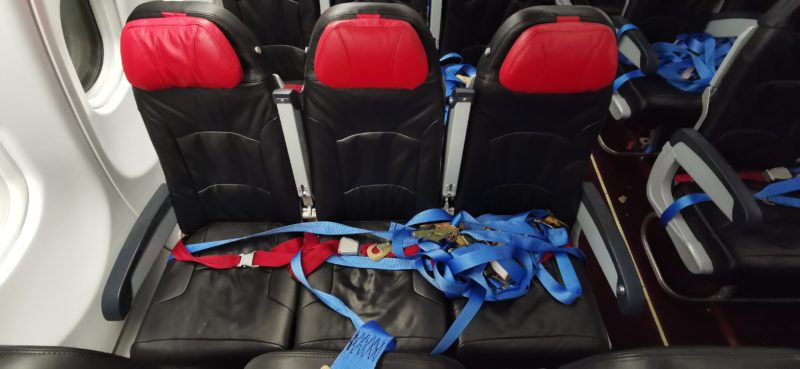
Cargo will be transported from the cargo terminal to the aircraft in a baggage dolly with a tag indicating the position onboard the aircraft the cargo must be loaded. In the case of using a catering truck, multiple baggage dollies may be loaded into the truck (using a belt loader to the rear door of the truck) and segregated to ensure that there is no mix-up between cargo destined for different positions onboard. Once the truck is full, it will raise to the cabin door and cabin crew, or the catering truck operator, will open the door. To load a widebody aircraft, it will take between 6-10 trips up and down for the catering truck. When time is of the essence, two catering truck will be used, one at a forward door and one at an aft door, to fill both ends of the aircraft simultaneously.
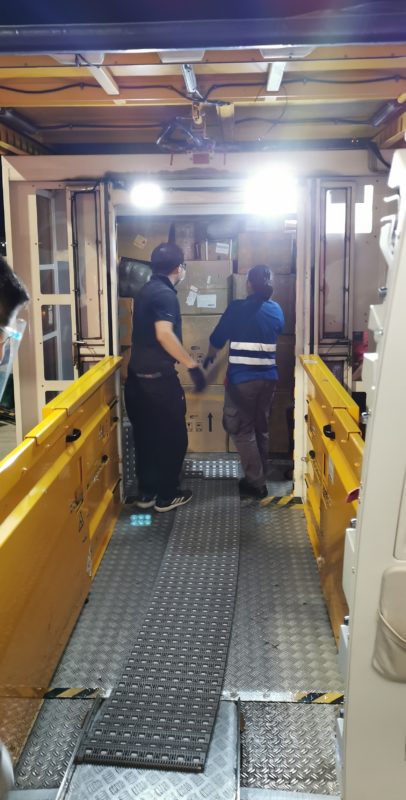
On aircraft where the seats have been removed, wheeled carts and roller mats can be used to transport boxes to the correct positions, as instructed by the loading supervisor per the prepared loadsheet. The number of items in each position will be indicated on the loadsheet and staff will count them as they are loaded to ensure none are missing or loaded to an incorrect position on the aircraft. If the number of boxes exceeds the marked size or height limitation of the loading position, the cargo can be moved to another position with an amendment to the loadsheet.
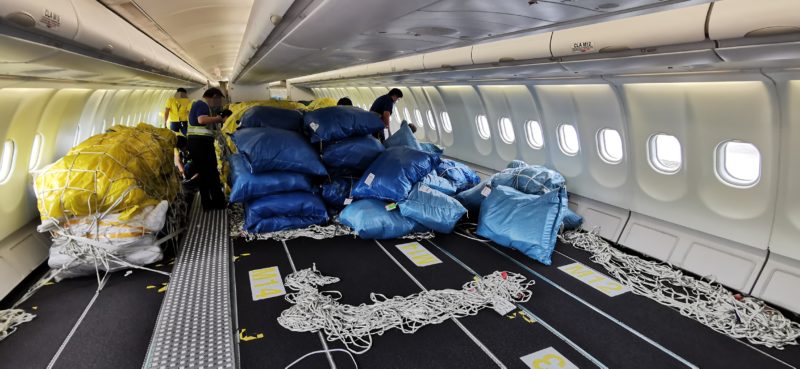
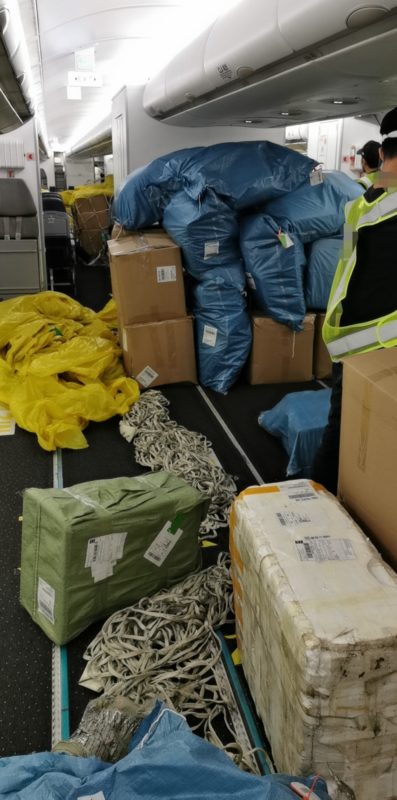
Securing Cargo
Once a position has been built-up with all of its cargo, it can be secured. The type of tie-downs used varies between operators, but on aircraft without seats installed, usually a cargo net will be placed over the boxes and secured with fasteners that fit into the seat rail in the aircraft floor. This net will then be tightened using additional ropes tied by the loading staff.
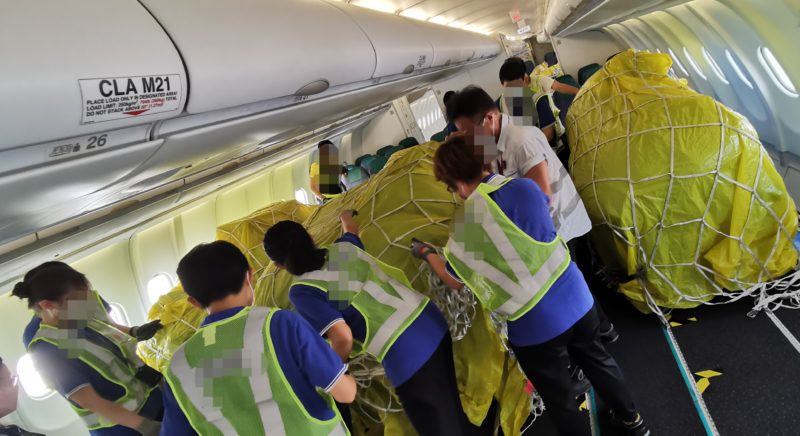
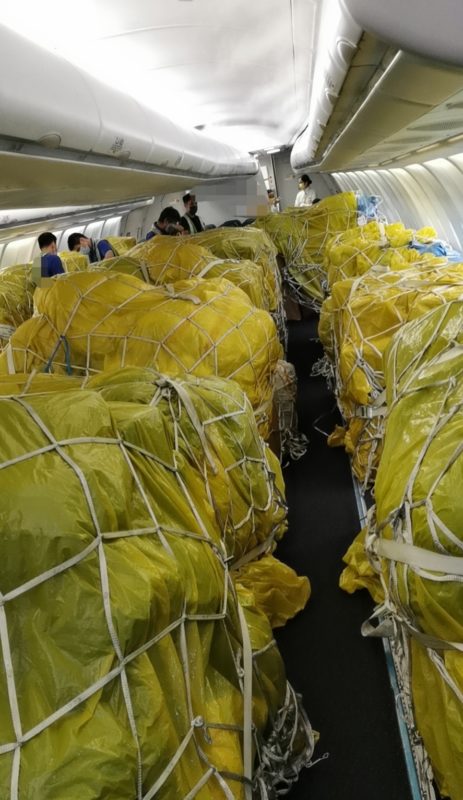

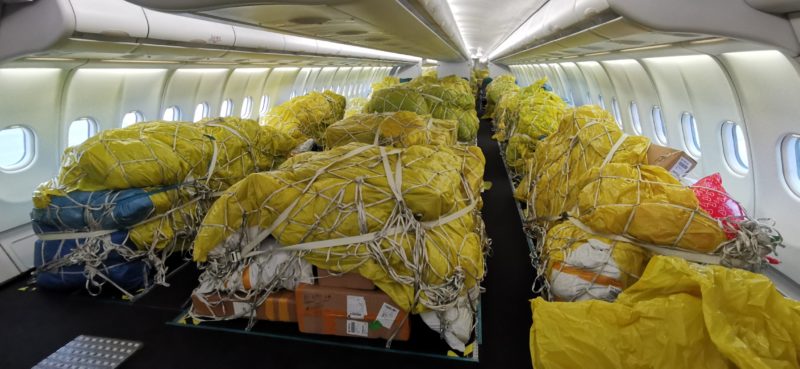
Small boxes may also be loaded into the overhead compartment, keeping in mind its weight limitations and whether it can close completely once loaded.
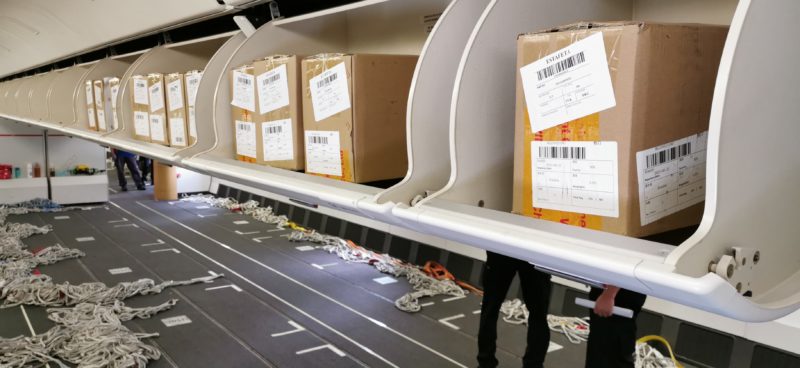
On aircraft with passenger seats, it is more difficult to use carts to move cargo in the cabin, but there is more leeway as to where in the cabin the cargo is placed. Therefore, if loading from the aft door, the cargo will first be placed in the rearmost seats and further boxes will be moved along the top of the already “seated” cargo, again using a human chain method with loading staff standing in the aisles. Securing cargo on these aircraft is also generally simpler. Usually single or double straps are used and attached to the seat frame or seatbelt to hold down the cargo. Some operators also place a net over the seats once loading is complete.
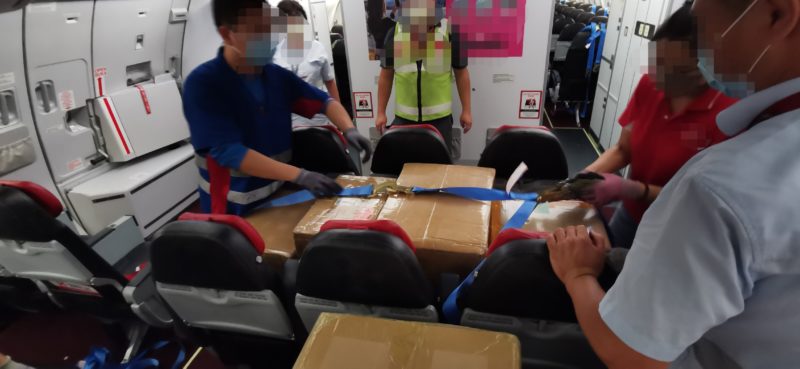



Loading a widebody aircraft using these methods will usually take 4-5 hours with a team of 10-15 people. Unloading is a quicker affair as there is no need to pay attention to correct positioning or proper securing of the cargo and may take just 1-2 hours.
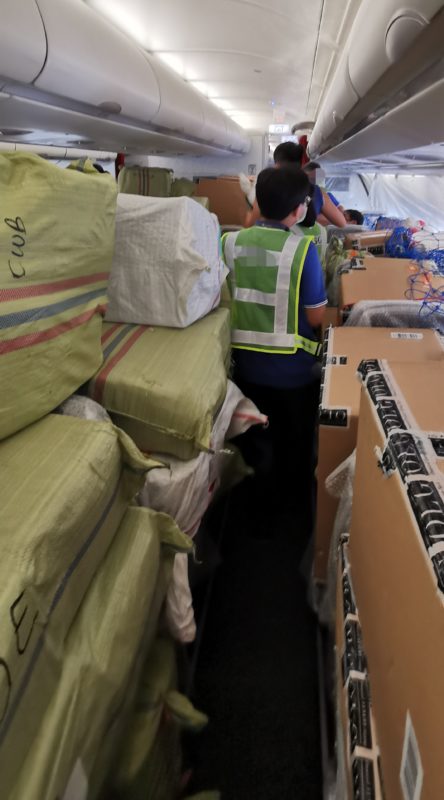
Cargo Types
The types of cargo being transported in passenger cabins varies widely and much is not easily identified in nondescript packaging. However, some of the commonly transported identifiable items include:
- Auto parts & car accessories
- Syringes
- Shoes
- Densely packed clothing
- Mobile phone cases & accessories
- Parcel post (in tarpaulin bags)
- Computers & electronics (lithium batteries excluded)
- Home décor
- Family support shipments (such as Balikbayan boxes)
The future for cargo in cabin
As passenger airlines have increased their schedules as traveler demand has increased with the pandemic subsiding, more belly cargo space has become available and there is less need for airlines to maintain cargo-only flights using passenger aircraft. While some airlines have discontinued the practice, there are still multiple daily cargo in cabin flights departing from Asian hubs, both on major passenger airlines and specialist operators. With Asia, and China in particular, being slower than the rest of the world in easing pandemic restrictions and allowing travel, such operations may continue in the region for some time.

